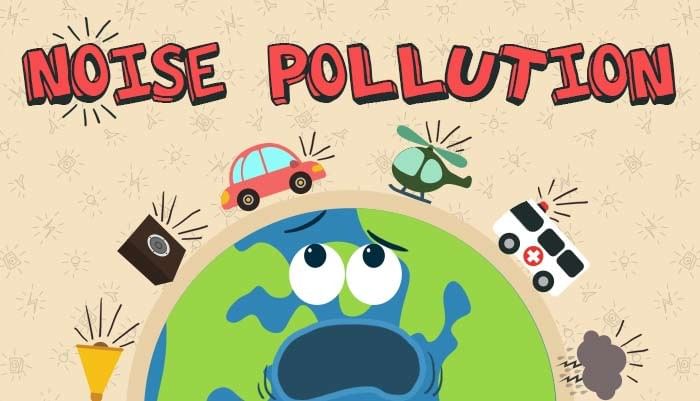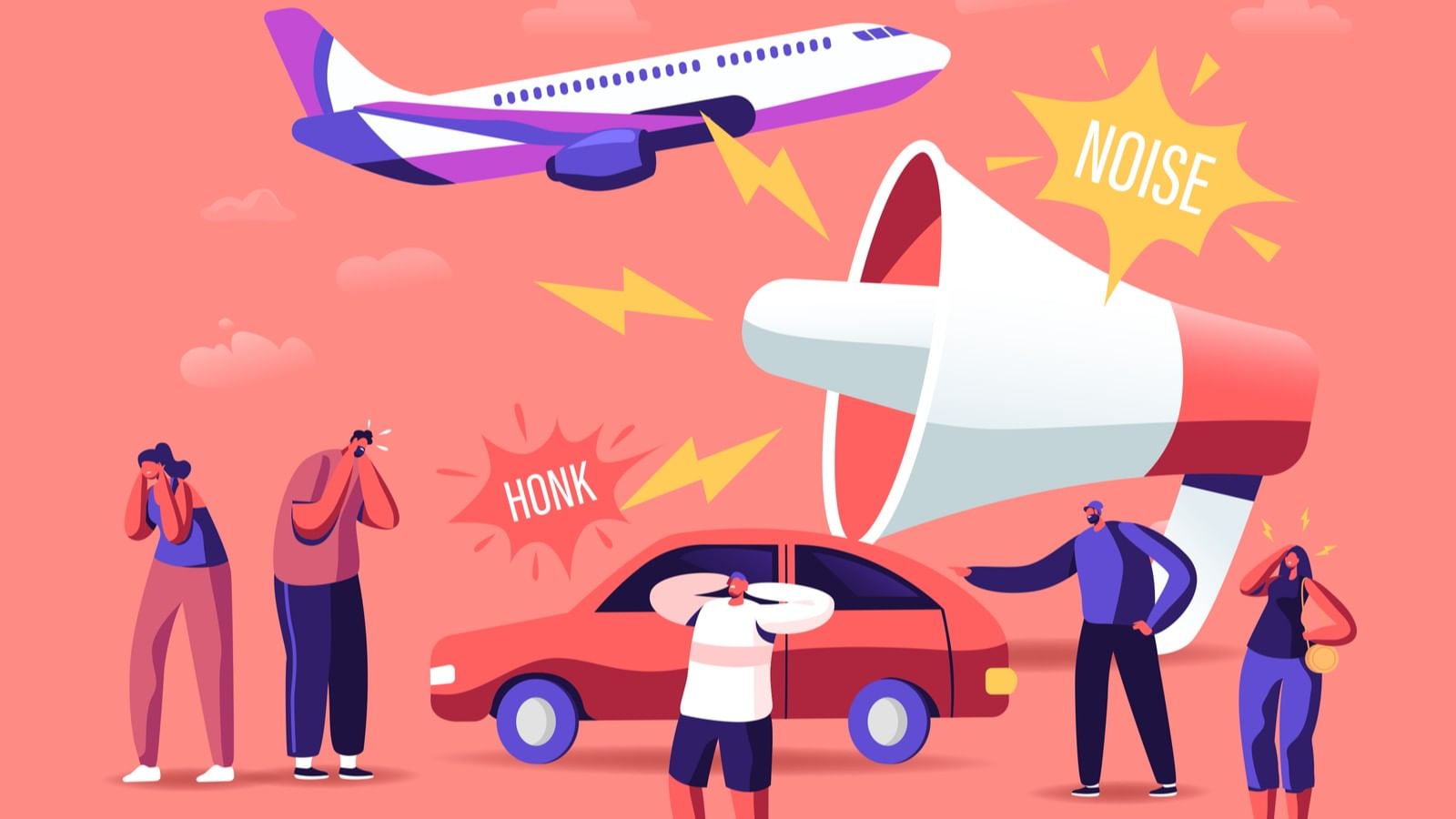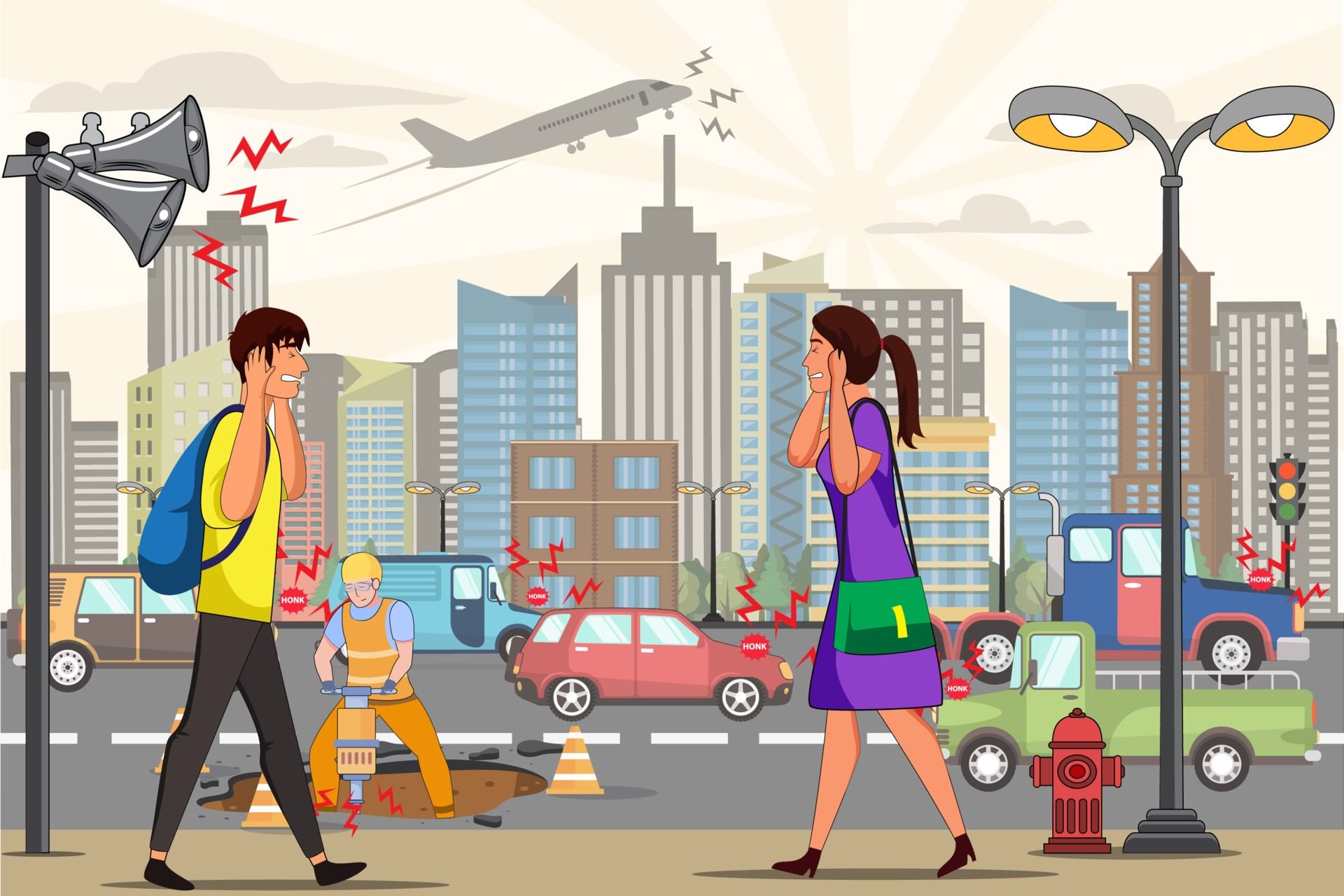UGC NET Exam > UGC NET Notes > People, Development and Environment for UGC NET > Notes: Noise Pollution
Noise Pollution - People, Development and Environment Notes
Introduction
- It is a loud and unpleasant sound created by people or machines that can cause discomfort.
- Noise is loud, annoying, distracting, intrusive, and physically painful.

- The noise sources could be road traffic, jet planes, garbage trucks, construction equipment, manufacturing processes, leaf blowers, and boom boxes.
- The intensity of sound is measured in decibels (dB).
- If the sound intensity is increased by about 10 dB, it will double the increase in loudness.
- According to WHO (World Health Organization), a person's hearing can be damaged if exposed to noise levels over 75 dB over a prolonged period.
- WHO recommended that the sound level indoors should be less than 30 dB.
Question for Notes: Noise PollutionTry yourself: What is the intensity level that can potentially damage a person's hearing according to WHO?View Solution
Properties of sound
1. Loudness- Signup for a Free Mock Test
- It is the intensity and strength of sound perceived by human ears.
- It is measured in decibels.
- The intensity of the audible sound is 10 decibels.

2. Frequency
- It is measured in Hertz.
- It is defined as the number of vibrations per second.
- The range of human hearing is 20-20,000Hz.
- Above 20,000 Hz is called ultrasound, and below 20Hz is called infra-sound.
Question for Notes: Noise PollutionTry yourself: What unit is used to measure loudness of sound?View Solution
Effects of Noise Pollution
- Hypertension: Exposure to loud and unpleasant noise elevates blood levels which can cause hypertension in humans.
- Annoyance: Irregular and loud sounds cause displeasure to hear and annoy.
- Physiological effects: The physiological features like breathing amplitude, blood pressure, heart-beat rate, pulse rate, and blood cholesterol are affected.
- Hearing disability: Constant exposure to loud sound cause damage to eardrums leading to loss of hearing.
- Sleeping disorder: Excessive and loud noise affect the sleep cycle, leading to low-energy level and fatigue.
- Human performance: The working performance of workers/humans will be affected as it distracts the concentration.
- Nervous system: It causes pain, ringing in the ears, and feeling of tiredness, thereby affecting the functioning of the human system.
- Damage to the material: The buildings and materials may get damaged by exposure to infrasonic/ultrasonic waves and even collapse.

Control
- Noise level reduction from domestic sectors.
- Regular maintenance of automobiles leads to the lowering of sound.
- Loud Speakers should be prohibited.
- Heavy machinery used in Industries should be regularly maintained.
- The building should be designed in such a way that it absorbs sound.
- The planting of trees leads to a reduction in Noise Pollution.
- Highways traffic should be diverted from cities and towns to bypasses and over-bridges.
- Workers working in Heavy industries should be provided with protective devices like cotton plugs.
Question for Notes: Noise PollutionTry yourself: What is one effect of noise pollution on humans?View Solution
Government Measures
- Ambient noise levels for various areas have been defined by Noise Pollution (Control and Regulation) Rules, 2000.

- Monitoring noise Pollution in seven metropolitan cities- Mumbai, Delhi, Kolkata, Chennai, Bangalore, Lucknow, and Hyderabad through a network of 70 noise-monitoring stations.
- Excessive noise is a crime under section 268 of IPC.
- Environment Protection Act, 1986 has recognized noise as a pollutant.
- 'Silence Zone'- 100-meter radius around schools, colleges, hospitals, and courts.
- Section 133 of IPC uses loudspeakers in public as a punishable offense.
- Central Motor Vehicle Rule, 1989 banned pressure horns (sirens and multi-tone horns) except for police vans, fire brigades, and ambulances.
The document Noise Pollution - People, Development and Environment Notes is a part of the UGC NET Course People, Development and Environment for UGC NET.
All you need of UGC NET at this link: UGC NET
|
25 videos|40 docs|10 tests
|
FAQs on Noise Pollution - People, Development and Environment Notes
| 1. What is noise pollution and how does it affect human health? |  |
Ans.Noise pollution refers to the excessive or harmful levels of noise in the environment, often caused by traffic, industrial activities, and urbanization. It can lead to various health issues such as hearing loss, stress, sleep disturbances, and even cardiovascular problems. Prolonged exposure can significantly impact mental health and quality of life.
| 2. What are the major sources of noise pollution? |  |
Ans.Major sources of noise pollution include transportation (cars, airplanes, trains), industrial operations (machinery, construction), and urban activities (loud music, construction sites). These sources contribute to elevated noise levels in both urban and rural areas, affecting the well-being of individuals and communities.
| 3. How can noise pollution be measured? |  |
Ans.Noise pollution can be measured using sound level meters, which quantify sound in decibels (dB). Different environments have varying acceptable noise levels, and measurements can help assess compliance with regulations. Studies often involve monitoring noise over time to understand its impact on populations.
| 4. What are some effective ways to reduce noise pollution? |  |
Ans.Effective ways to reduce noise pollution include implementing noise barriers, using soundproof materials in construction, enforcing noise regulations, promoting quieter machinery, and encouraging public transportation. Community awareness and individual actions, such as reducing personal noise levels, also play vital roles.
| 5. How does noise pollution relate to environmental sustainability? |  |
Ans.Noise pollution is an important aspect of environmental sustainability as it affects biodiversity and the natural habitat. High noise levels can disturb wildlife, leading to altered behaviors and decreased reproduction rates. Addressing noise pollution is essential for maintaining ecological balance and ensuring a healthy environment for future generations.
Related Searches
















